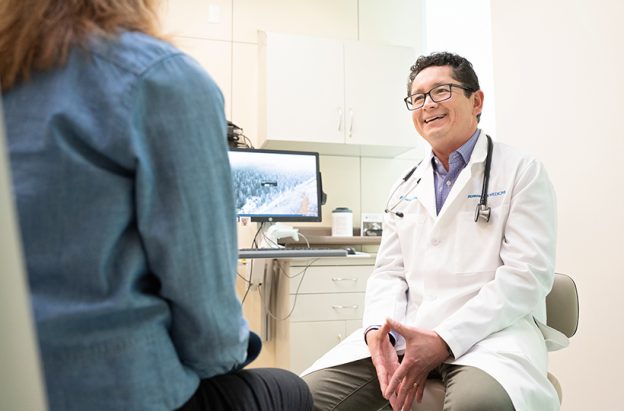
Opioid use associated with increased risk of mortality for breast cancer survivors
About 16% of breast cancer survivors continued to use opioid pain medications after their cancer treatment was complete, a new Kaiser Permanente study showed. The study also found that risk of death was 84% higher among these survivors who continued to use opioids.
The study was published in June 2025 in JNCI Cancer Spectrum.
“The most important point of research is to find ways that we can make life better for our patients,” said the study’s lead author, Rulin Hechter, MD, PhD, from the Kaiser Permanente Southern California Department of Research & Evaluation. “In this study we found that the continued use of opioids after undergoing breast cancer treatment was associated with a higher risk of death. And that is something we will be looking at in the future to find the most effective ways to manage breast cancer survivors’ pain while reducing opioid use.
Many breast cancer survivors endure pain
An estimated 25% to 60% of the 3 million breast cancer survivors in the United States suffer from chronic pain following breast cancer treatments, according to published studies.
“Chronic pain is common in breast cancer survivors,” explained the study’s senior author, Reina Haque, PhD, of the Kaiser Permanente Southern California Department of Research & Evaluation. “There are many reasons for the pain, such as nerve damage from surgeries, swelling in lymph nodes, and after-effects of chemotherapy or radiation. Breast cancer survivors are usually prescribed opioids, which are the cornerstone for pain relief.”
However, the problems associated with persistent opioid use beyond the first year of intensive cancer treatment had previously not received much investigation. So, in this study, researchers examined rates and risk factors for persistent opioid use and all-cause mortality after people with non-metastatic breast cancer had survived one year of active cancer treatment. The retrospective cohort study used electronic health record data from Kaiser Permanente Southern California for women diagnosed with a non-metastatic breast cancer between 2009 and 2019 who had filled 2 or more opioid prescriptions.
Older patients may be more at risk of opioid dependency
Among these patients, those older than 65 were more likely to continue to use opioids after treatment compared with those who were younger. This finding adds to other studies that have found trends in persistent opioid use and serious consequences among cancer survivors 65 years and older.
“These findings suggest that breast cancer survivors of all age groups should be carefully monitored for high daily dosage use and persistent opioid use to avoid any potential harm,” Dr. Hechter said.
Dr. Haque added that “Opioids are effective for pain relief, but a small fraction of women may continue to use them, which may become problematic. This study raises the possibility that along with opioids, other medications should be considered to control pain, and this might help reduce the risk of dependence.”
Finding new ways to manage pain
“The impact of breast cancer on a patient’s social and psychological functioning is especially important when examining the use of opioids for pain management,” said study co-author Moira Brady-Rogers, MA, LMFT, a breast cancer survivor who has coached other breast cancer survivors for more than 30 years. “As a psychotherapist, I do see many women who continue taking opioids beyond their first year of survival. I work to help patients learn to differentiate physical from emotional distress and then to increase their capacity to manage all types of pain using mindfulness. While it is not easy, it can help many patients manage pain as well as reduce depression and anxiety.”
The researchers said further studies are needed to investigate the potential of co-medications with opioids, as well as to explore the factors that may be contributing to increased mortality in patients with persistent opioid use.
In addition to Dr. Hechter, Dr. Haque, and Brady-Rogers, of Alive & Well Women, South Pasadena, Calif, other authors on this study included Lie Hong Chen, DrPH; Jiaxiao Shi, PhD; and Zheng Gu, MPH; of the Department of Research & Evaluation; Rowan T. Chlebowski, MD, of The Lundquist Research Institute for Biomedical Innovation at UCLA-Harbor & Division of Medical Oncology and Hematology in Torrance, Calif.





